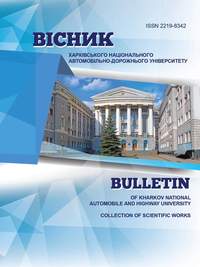Analysis and software implementation of the modified cryptographic Vernam cipher and the Caesar cipher
DOI:
https://doi.org/10.30977/VEIT.2021.20.0.07Keywords:
cipher, cryptography, programming, secret key, stability, cryptosystemAbstract
Problem. Modern cryptography is a very important part of cybersecurity and confidentiality of many operations. It covers almost all parts of our lives, from e-commerce to specialized education of students. Goal. The advantage of symmetric key cryptography is that working with this method is very easy for users, as one key is used for encryption, as well as for decryption purposes, and this key must be secret and should be known only to the sender and recipient and no one else. On the other hand, public key cryptography has two keys. Unfortunately, this exposes the inherent security flaws, as the integrity of the encryption depends entirely on the password. It was decided to consider the implementation of a modified symmetric Vernam cipher that avoids these problems, and its modification and experimental studies should further strengthen data protection. Methodology. Higher mathematics, linear algebra are very important subjects. But if we want to encourage students with cryptography, we need to use all aspects of the IT cluster more effectively. Ideal for this is the implementation of algorithms and programs using programming languages. It is very important and useful for students studying Cybersecurity to illustrate where and how it is possible to create software implementations of encryption / decryption methods. Results. The article presents the analysis and implementation of the modified cryptographic Vernam cipher and Caesar cipher using a concept that combines modern programming languages and the principles of cryptography, which students study in subject-oriented specialties. Originality. An original approach to teaching Cybersecurity students by implementing ciphers using applied programming is described. Practical value. Using cryptography as a learning tool will help students develop their programming skills and effectively understand the concept of cybersecurity in real-world examples.
References
Bhandari R., Kirubanand V. B. (2019) Enhanced encryption technique for secure iot data transmission. 9. 5. 3732–3738.
Chałupnik R., Kędziora M., Jóźwiak P., Jóźwiak I. (2020) Correspondent Sensitive Encryption Standard (CSES) Algorithm in Insecure Communication Channel in IEEE Systems Journal. 12. 4. 90–98.
Bhanot R., Hans R. (2015) A review and comparative analysis of various encryption algorithms. Int. J. Secur. its Appl. 9. 4. 289–306.
Din R., Bakar R., Utama S., Jasmis J., Elias S. J. (2019) The evaluation performance of letter-based technique on text steganography system. Bull. Electr. Eng. Informatics. 8. 1. 291–297.
Singh N. (2020) XOR Encryption Techniques of Video Steganography: A Comparative Analysis. Springer International Publishing 203–214.
Namasudra S. (2019) An improved attribute-based encryption technique towards the data security in cloud computing. Concurr. Comput. 31. 3. 1–15.
Ogiela M. R. (2019) Cognitive solutions for security and cryptography. Cogn. Syst. Res. 55. 258–261.
Hatkar S. S., Bhagyashri K. Pawar. (2016) Symmetric key algorithm using vernam cipher: VSA. Inventive Computation Technologies (ICICT). International Conference on. Vol. 3.
Zimmermann M., Staicu C. A., Tenny C., Pradel M. (2019) Small world with high risks: A study of security threats in the npm ecosystem in Proc. 28th USENIX Sec., Santa Clara. CA.
Nath A., Das S., Chakrabarti A. (2010) Data Hiding and Retrieval. Proceedings of IEEE International conference on Computer Intelligence and Computer Network held at Bhopal.
Аdamovic S., Sarac M., Stamenkovic D., Radovanovic D. (2018) The Importance of the Using Software Tools for Learning Modern Cryptography. International Journal of Engineering Education. 34. 1, 256–262.
Yang F., Zhong C., Yin M., Huang Y. (2009) Teaching Cryptology Course Based on Theory-Algorithm-PracticeApplication Mode. Proceedings of the First International Workshop on Education Technology and Computer Science. Wuhan. 468–470.
Adamovic S., Sarac M., Veinovic M., Milosavljevic M., Jevremovic A. (2014) An Interactive and Collaborative Approach to Teaching Cryptology, Journal of Educational Technology & Society. 17(1). 197–205.
Olejar D., Stanek M (1999) Some Aspects of Cryptology Teaching. Proceedings of the 1st World Conference on Information Security Education. Stockholm (Sweden). 1–9.
Song X., Deng H. (2009) Taking Flexible and Diverse Approaches to Get Undergraduate Students Interested in Cryptography Course. Proceedings of the First International Workshop on Education Technology and Computer Science. Wuhan. 490–494.
Downloads
Published
How to Cite
Issue
Section
License
Copyright (c) 2021 Валентина Фастовець

This work is licensed under a Creative Commons Attribution 4.0 International License.
Автори, які публікуються у цьому журналі, погоджуються з наступними умовами:
1. Автори залишають за собою право на авторство своєї роботи та передають журналу право першої публікації цієї роботи на умовах ліцензії Creative Commons Attribution License, котра дозволяє іншим особам вільно розповсюджувати опубліковану роботу з обов'язковим посиланням на авторів оригінальної роботи та першу публікацію роботи у цьому журналі.
2. Автори мають право укладати самостійні додаткові угоди щодо неексклюзивного розповсюдження роботи у тому вигляді, в якому вона була опублікована цим журналом (наприклад, розміщувати роботу в електронному сховищі установи або публікувати у складі монографії), за умови збереження посилання на першу публікацію роботи у цьому журналі.
3. Політика журналу дозволяє і заохочує розміщення авторами в мережі Інтернет (наприклад, у сховищах установ або на особистих веб-сайтах) рукопису роботи, як до подання цього рукопису до редакції, так і під час його редакційного опрацювання, оскільки це сприяє виникненню продуктивної наукової дискусії та позитивно позначається на оперативності та динаміці цитування опублікованої роботи.








